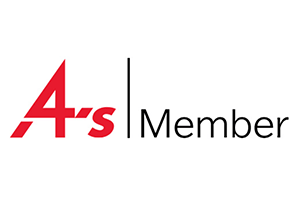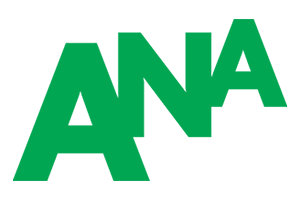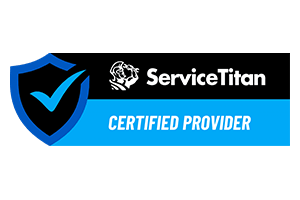Why Smart Business Owners Invest in Performance Marketing and Paid Social
Performance marketing and paid social media have become essential tools for businesses that want measurable results, smarter ad spending and long-term brand growth. But performance marketing isn’t just about leads — it’s about quality, scalability and understanding what drives real revenue.
Below, we explore key insights from Trista Webster, Digital Marketing Director, and Taia Veren, Digital Marketing Manager, on how Strategic America (SA) helps businesses achieve performance-driven success across paid media channels.
What is Performance Marketing?
Performance marketing focuses on measurable, outcome-driven results from leads and sales to booked appointments. But, as Trista Webster explains, “It’s not just about generating leads; it’s about driving quality leads backed by the right tools and tracking to understand what’s truly valuable and how to scale it.”
That’s what sets modern performance marketing apart. It prioritizes return on ad spend (ROAS) and lead quality over quantity metrics like impressions or clicks. In short, it’s about turning marketing investment into real business impact.
The Evolution of Search and Paid Media
Search has evolved dramatically in the age of AI. “It’s no longer limited to Google,” Webster said. “It’s an entire ecosystem where consumers discover, compare and convert across multiple touchpoints.”
Today, AI-driven automation, first-party data and cross-channel attribution are transforming how performance marketers optimize campaigns. From Google Performance Max and Local Service Ads (LSAs) to Meta, YouTube and display ads, every platform plays a role in guiding consumers through the funnel from discovery to conversion.
Balancing Short-Term Wins and Long-Term Growth
One of the biggest challenges for home service and local businesses is balancing immediate lead generation with long-term brand building. Webster’s approach combines both and utilizes:
- Tiered budgeting: Prioritize high-intent search and LSAs for quick conversions while investing steadily in awareness channels like YouTube, display and Meta.
- Branded and non-branded search: Capture ready-to-convert audiences while expanding reach to new customers.
- Optimized landing pages: Deliver consistent, trust-building experiences that improve both short-term conversion rates and long-term brand equity.
The result? Businesses not only see leads now but also strengthen visibility and credibility that pay off over time.
The Metrics that Matter
When it comes to evaluating campaign success, performance marketing demands a holistic view of metrics, including:
- Lead quality metrics: Form fills, phone calls, booked jobs, cost per lead (CPL), and lead-to-sale conversion rates.
- Efficiency metrics: ROAS, cost per conversion, impression share, click-through rate (CTR), and Quality Score.
- Pipeline metrics: Lead velocity, average ticket size and true revenue contribution.
- Channel contribution: How each channel contributes to the full customer journey.
Strategic America leverages a media mix model to analyze how each channel contributes to conversions — understanding that while branded search might close the deal, a YouTube ad or Meta campaign might have sparked the initial interest.
The Performance Marketing AI Revolution
AI and automation have changed the marketer’s role from tactical to strategic. “I lean into automated bidding,” Webster said, “but pair it with the right audience signals, negative keywords and strong conversion tracking to keep automation efficient.”
By integrating first-party data and offline conversion tracking, SA helps feed ad platforms better signals, allowing AI to optimize toward high-value leads instead of just cheap clicks, resulting in fewer but smarter campaigns.
Paid Social: The Creative Powerhouse of Performance
While search often captures existing demand, paid social creates it. “Paid social campaigns are most effective when they’re grounded in research — understanding consumer behavior, media habits and the campaign’s purpose,” said Taia Veren.
A great paid social strategy goes beyond the ads. It’s about combining creative storytelling with precise audience targeting and cross-channel integration.
Testing, Scaling and Optimizing Campaigns
For successful campaigns on Meta, TikTok or YouTube, Veren recommends structured testing.
“You always want to make sure you know the reason for the test and how the outcome will move strategy forward. You never want to test just for the sake of testing,” she said.
Meta’s Advantage+ AI tools and other platform features make A/B testing and creative optimization faster than ever, but only when data and intent drive the process. Advantage+ is an AI-powered ad automation tool that optimizes targeting, creative and placement to deliver the highest-performing ads.
Scaling comes after statistically significant results — usually one to two weeks of data — and is guided by continuous testing. “There’s always improvement to be made,” Veren said, “especially with how often social platforms evolve.”
Avoiding Common Paid Social Mistakes
Many brands jump into paid campaigns too quickly. “A common mistake is putting dollars behind untested creative,” said Veren. She recommends testing content organically first to see what resonates before spending budget on paid ads.
Equally important is funding strategy correctly. A full-funnel approach needs enough budget to make an impact across awareness, consideration and conversion stages.
Navigating Privacy and Algorithm Changes
Privacy changes have reshaped digital marketing, especially for healthcare and regulated industries. “We recommend server-side data connections instead of browser-only tracking,” Veren said, which helps maintain compliance while keeping campaigns effective.
Staying updated on data privacy, platform policies and algorithm changes ensures your campaigns remain compliant and effective.
Pro SA Tips to Improve Paid Social Results
- Don’t narrow your audience too much. Paid social thrives when the algorithm has room to learn.
- Look beyond vanity metrics. Evaluate results in Google Analytics 4 or customer relationship management (CRM) sales data to see true return on investment.
- Prioritize user experience. If you’re sending traffic to a landing page, make sure it’s aligned with your message and has a clear call-to-action.
- Leverage historical performance. Industry benchmarks are helpful, but your own past data is the most reliable guide.
What’s Next for Performance Marketing
Looking ahead, several trends are shaping the next wave of digital success:
- First-party data becomes the new gold. With third-party cookies fading, data ownership will define performance.
- AI-driven personalization. Predictive audiences and conversational ad formats will transform engagement.
- Creative + data convergence. As automation evens the playing field, creativity will drive differentiation.
- Voice and local search expansion. “Near me” queries and call-based conversions continue to rise.
- Offline attribution mastery. Connecting calls, appointments and revenue to digital campaigns will soon be the standard.
Strategic America’s Performance-First Approach
At Strategic America, performance marketing is both an art and a science. Our team designs search engine marketing (SEM) structures for lead efficiency, integrates call and form attribution and continuously tests and optimizes creative, landing pages and messaging.
Most importantly, SA provides transparent, ROI-based reporting that ties every click and impression to real business results.
“We act as strategic partners, balancing short-term revenue generation with long-term brand strength,” said Webster.
Ask the SA team today how we can help your business grow.
Trista Webster is a digital marketing director and Taia Veren is a digital marketing manager at Strategic America (SA). Learn more about our digital advertising services.





